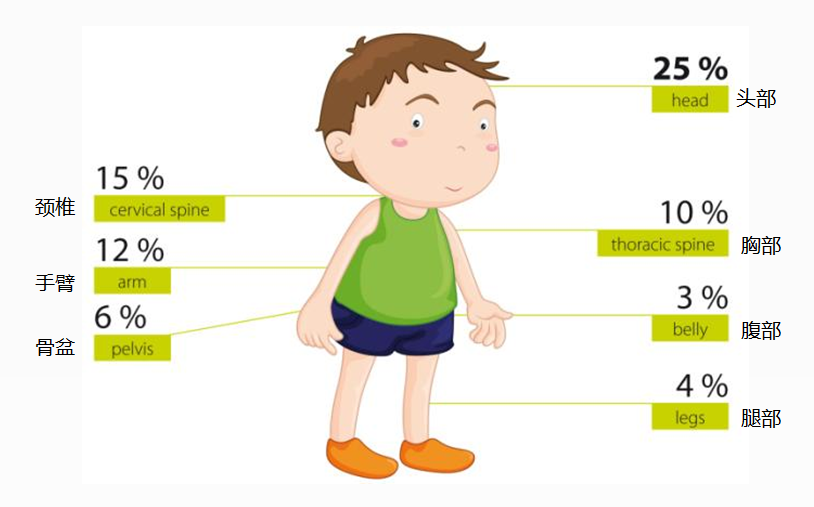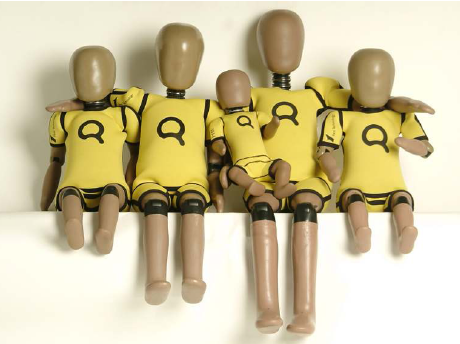What is i-size?
"i-size" refers to the latest child safety seat standard issued by the European Union. It is an update based on the original standard ECE R44 - the previous safety seat test, only the test encounters the impact from the front and the back. A large part of the traffic accidents are from side impacts, and the test on this side is not available in the previous tests. The i-size is also added to the test in the side impact, and in a fixed manner, Grouping standards and other aspects have been adjusted and updated to improve the safety seat test standards.
ECE R44 vs. i-size

Why do you want to implement i size?
1. Fix ISOFIX to reduce the risk of incorrect installation;
At present, the safety seat is fixed by three fixed methods: the vehicle three-point seat belt, ISOFIX, LATCH. Domestically, it is mainly fixed by car seat belts and ISOFIX devices. The safety seat of the two types can be guaranteed by the test certification and the correct installation.
The difference is that ISOFIX fixed mode is easier and less error-prone to operate. Car seat belts are more complicated to operate and difficult to install - the scary thing is that in most cases, parents don't know if the seats are installed correctly.
A seat that is incorrectly installed is not safe.
In order to solve this situation, since 2012, China has required all devices for the mandatory installation of ISOFIX solid-systems in the sale of vehicles – even so, many parents still do not understand the advantages of ISOFIX – there is no national legislation mandated to use safety during this period in China. The seats (although not until now), there is no regional legislation (the earliest legislation to force the use of the safety seat area is Shanghai, implemented in March 2014), so we use the European countries with usage rate above 90%. For example, about 50% of the safety seats in the UK are incorrectly installed by parents through the three-point fixed method of the car. At that time, the safety seats in Europe must be certified by ECE R44, and this certification does not require the seat to be fixed by ISOFIX. .
Therefore, we need to introduce a standard that makes the seat difficult to be incorrectly installed - ECE R129, i-size, which stipulates that all seats must be ISOFIX fixed to avoid incorrect installation when using the car seat belt. .
2, the addition of side impact touch
The European standard ECE R44 certification mainly tests the performance of the seat in front and rear and reverse collisions - not including the side impact test. However, more than 70% of car accidents are from side collisions - that is to say we don't know the performance of the ECE R44 safety seat in the event of a side collision. The more terrible situation is that we don't even know the seat side. Hit protection design.
The i-size certification incorporates a critical side-attack test with a focus on the protection of the child's head, neck and vital organs. The picture below explains why protecting the head and neck is so important to children –
The distribution of injuries in children's bodies in accidents

3. Group the safety seats by the height of the child instead of the weight, making it easier for parents to choose the appropriate safety seat;
ECE R44 uses weight as a grouping standard as follows:

Sometimes it gives parents a headache when choosing a seat—for example, because the weight doesn’t match the age, I don’t know which reference to use to choose the seat, or prematurely change the child’s seat for the next group. Children are at risk when a traffic accident occurs.
Another reason can also explain why weight grouping is not the best choice. We know that children can be directly fixed with car seat belts when they reach 145cm in height without having to use a safety seat. The height reference is because the car seat belt is adult. The height of the person is designed according to the position of the shoulder strap of the seat belt at the shoulder of the human body. If the child is replaced by a child with a height of 145 or less, the shoulder strap is in the neck, and suddenly the neck is suddenly pulled during the sudden braking. Injury - this is one of the reasons why a child is equipped with a safety seat.
Therefore, the i-size certification is based on the height of the seat grouping standard, so that parents can be more prepared when choosing a seat, just like choosing clothes by size, not using weight.
4. Requires the use of a rear-facing safety seat until the child is 15 months old (previously 9 months);
The ECE R44 certification requires a reverse installation of the safety seat until 9 months for children, and the reverse installation is to protect the child's head and neck. The newborn baby's strength is very weak. In the event of an accident, the impact is always toward the front of the car. Compared to the forward-facing, the rear-mounted safety seat allows the child's back to fully contact the safety seat back. It can disperse the impact to the maximum extent and protect the child's head and neck. 9 months is still not the best time to switch to a positive installation, and now the children are growing too fast, many children will increase faster than the age, i-size certification extends the backward installation to children for 15 months. . .
5, test dummy update
P-series dummy used in the ECE R44 crash test - P0, P1, P3/4, P3, P6 and P10, representing newborn babies, children 9 months, 18 months, 3 years old, 6 years old and 10 years old. The i-size uses the Q-Series dummies – with state-of-the-art technology, high emulation, sensors and accelerometers, the size of the child corresponding to each set of safety seats, and sensors. Each time a crash test is performed, these sensors display an accurate reading—that is, a crash test using a Q-series dummy requires a higher seat.

When does i-size start executing?
The i-size certification has already been implemented. At present, ECE R44 and i-size are executed at the same time, with different emphasis. I-size tests all safety seats with ISOFIX devices, while seats secured with car seat belts perform ECE R44 testing.
Currently, the EU encourages children to use i-size certified safety seats with ISOFIX devices. We also look forward to the full implementation of i-size certification in the near future.
Solid Wood Coaster,Solid Wood Cup Holder,Best Wooden Coasters,Boulder Dash Coaster
CSL WOOD ART FACTORY , https://www.cslwoodart.com